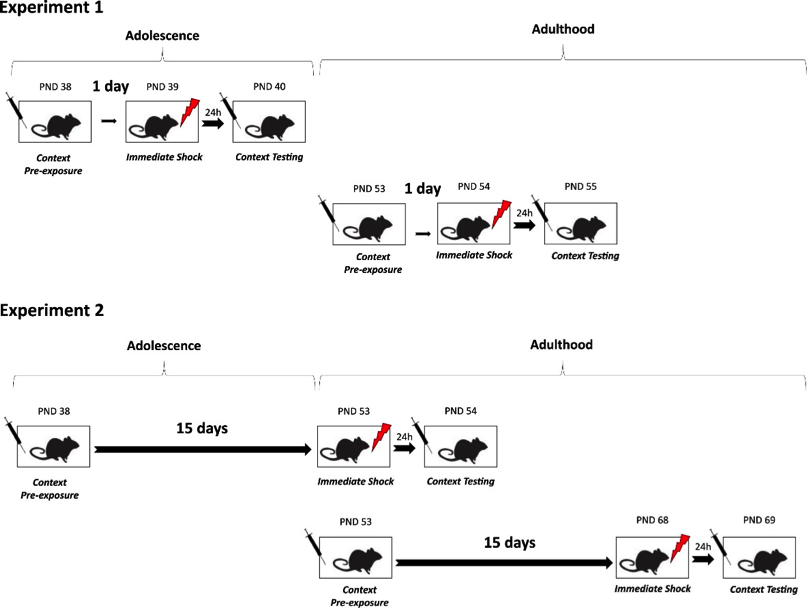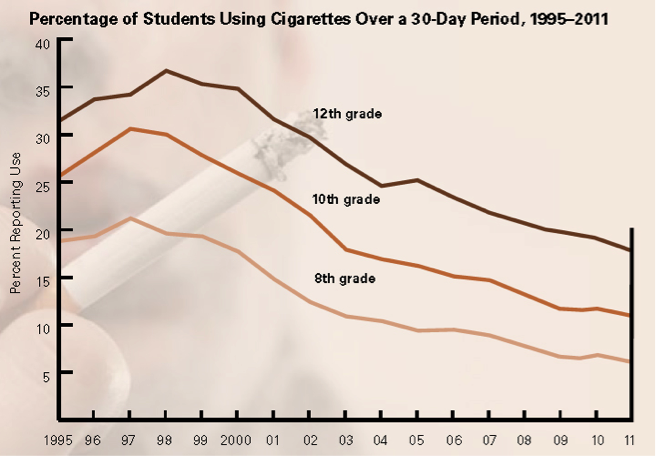Rebels with a neurobiological cause: Mouse models explore teen nicotine addiction
The majority of new smokers are teens
Tobacco use is started and established primarily during adolescence. Indeed, according to the National Institute of Drug Abuse (NIDA) nearly 60 percent of new smokers were under the age of 18 when they first smoked a cigarette. NIDA argues that tobacco use in teens is more than the result of psychosocial influences, such as peer pressure. Research in the last decade suggests that there may be biological reasons for this period of increased vulnerability.
Is nicotine addictive? For the zillionth time, “Yes!”
Nicotine is a psychoactive and addictive substance that directly acts on brain areas involved in emotional and cognitive processing. Findings that nicotine activates reward pathways—the brain circuitry that regulates feelings of pleasure – likely accounts for its addictive nature. Additional research has shown that nicotine increases dopamine neurotransmitter levels, which mediate the desire to consume drugs by activating the pleasure/reward neural circuits.
Evidence suggests that young people may not only be more sensitive to nicotine, but also develop dependence on nicotine more rapidly than adults. Comparison of smoking behaviors between adolescents and adults points to an increased susceptibility of the teen brain to the addictive properties of nicotine. Nicotine exposure during adolescence leads to molecular changes that alter the functioning of synapses in the prefrontal cortex that underlie lasting effects on cognitive function (Goriounova and Mansvelder 2012).
C57BL/6J: A mouse model for how nicotine affects teen learning
Previously, studies using animal models demonstrated that acute nicotine exposure enhances hippocampus-dependent forms of learning and memory, such as contextual and trace fear conditioning, spatial learning (in Morris water maze), and spatial memory (in Radial Arm maze). Any teens out there ready to use that as a defense for using nicotine—hang on! This data may not apply to you! Those studies used mainly adult animals. The age-specific effects of acute nicotine exposure on short-term and long-term contextual processing remain unclear.
A recent study published in Brain Research in July 2016 suggests that adolescent C57BL/6J (B6J) mice have a decreased sensitivity to nicotine-induced effects on learning and memory (Kutlu et al 2016). The study executed by Dr. Munir Kutlu and collaborators at Temple University used context pre-exposure facilitation effect (CPFE), a hippocampus-dependent learning paradigm, to examine the effects of nicotine on contextual processing separate from context-shock learning.
In these experiments, animals were treated acutely with nicotine (or saline), placed in a conditioning chamber and allowed to explore it briefly. Sometime later, the mice were placed back in the chamber and given a brief, mild foot shock. Following another period, the mice were again treated with nicotine (or saline), placed in the chamber and their “freezing” behavior (in anticipation of the foot shock) was evaluated in the absence of the shock. This Kutlu study was designed to investigate the potential age-specific differences in the effects of nicotine on both short- and long-term contextual learning (see Figure 1). The data revealed that although adolescent mice showed normal contextual processing when tested both during adolescence (short-term) and during adulthood (long-term) - – that is, acute nicotine exposure during the context pre-exposure phase enhanced their freezing behavior - they were less sensitive to the enhancing effects of nicotine on contextual processing, fear learning, and memory. (Adults showed an improved CPFE response at lower nicotine doses than the adolescent mice.)

Figure 1: Context pre-exposure facilitation effect (CPFE) studies to examine age-specific differences of nicotine exposure on contextual processing separate from context-shock learning. Each box represents a phase of the experiment, the syringes represent nicotine (or saline control) injections, and the lightning bolt symbol indicates the administration of mild foot-shocks. Experiment 1 evaluated acute nicotine exposure on short-term contextual learning during adolescence versus adulthood. Experiment 2 evaluated acute nicotine exposure during adolescence or during adulthood on long-term contextual learning.
This and associated studies on the effects of nicotine suggest that adolescent mice are both more sensitive to the addictive “reward effects” and less sensitive to the previously documented enhancing effects on fear learning and memory. If these conclusions could be extrapolated to young students, one would not expect tobacco users to learn faster than their non-smoking peers. Indeed, according to a 2009 report produced by the Center for Disease Control (CDC) there are negative relationships between tobacco use and academic achievement amongst young American students.
Epilogue: Vaping is bad, too
Data indicate that over the last couple of decades, cigarette use among young people has been declining steadily (see Figure 2). In its place, e-cigarette use has reared its vape ring-blowing head.

Figure 2. Trends in Prevalence of Cigarette Use for 8th-, 10th-, and 12th-Graders have been declining since the late ‘90s (Source: National Institute on Drug Abuse; National Institutes of Health; U.S. Department of Health and Human Services).
A collaborative team led by the Foronjy research group at SUNY Downstate Medical Center recently published the first data demonstrating that e-cigarettes induce pathology in mice similar to what occurs in human chronic obstructive pulmonary disease (Garcia-Arcos et al. 2016). Importantly, nicotine causes this damage. While e-cigarette usage may reduce the risk of cancer, these data indicate that chronic airway disease remains a risk.
Translation for teens: Nicotine is still bad for you. It won’t necessarily improve your test scores, and the safety of vaping as an alternative to smoking is suspect.
References:
Garcia-Arcos I, Geraghty P, Baumlin N, Campos M, Dabo AJ, Jundi B, Cummins N, Eden E, Grosche A, Salathe M, Foronjy R. 2016 Chronic electronic cigarette exposure in mice induces features of COPD in a nicotine-dependent manner. Thorax. Aug 24. pii: thoraxjnl-2015-208039. doi: 10.1136/thoraxjnl-2015-208039. PMID: 27558745
Goriounova NA, Mansvelder HD. 2012. Short- and Long-Term Consequences of Nicotine Exposure during Adolescence for Prefrontal Cortex Neuronal Network Function. Cold Spring Harb Perspect Med. 2(12): a012120. doi: 10.1101/cshperspect.a012120. PMID: 27084582
Kutlu MG, Braak DC, Tumolo JM, Gould TJ. 2016. Adolescent mice are less sensitive to the effects of acute nicotine on context pre-exposure than adults. Brain Res. 1642:445-51. doi: 10.1016/j.brainres.2016.04.023. PMID: 27084582